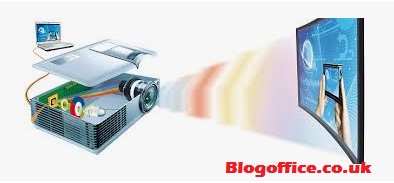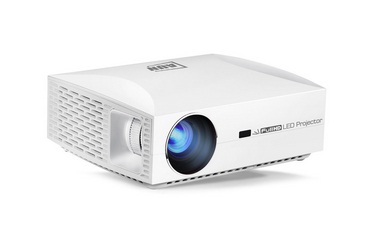As an Amazon Associate, I earn from qualifying purchases.

Have you ever used a projector to watch a movie or play games? If no, why don’t you grab one immediately? A projector is undeniably a versatile item to serve your entertaining demands.
The problem is that first-time users might find it confusing to understand the working principle of this product wholeheartedly.
If this is your case, let our article below be of great assistance to give you a satisfying answer to how projector works? Check it out now!
Table of Contents
The Structure Of A Projector
The structure of a typical projector on the market includes lamp, projection lens, panels, dichroic prism and mirrors. Besides, some products also have an integrator lighting system and polarization charger element.
Dichroic Mirrors
The light rays are initially illuminated to the dichroic mirrors. Coated with a thin film, these mirrors perform the task of only reflecting a specific wavelength of either red, green, or blue light.
Primarily, it displays two different colours from different directions. That is the phenomenon of dichroism.
Dichroic Prism
Up next, the light rays will pass through a dichroic prism, which is built by the combination of four triangular poles to make a rectangular solid.
Meanwhile, these rays overlap, create an image of red, green, and blue (RGB) components, and then are moved to the projector lens.
Projector Lens
In terms of the projector lens, it allows the light rays to pass through and fall onto the output screen.
Other Components
The lamp works as a light source for your projector. And both the integrator lighting system and polarization charger element contribute significantly to the brightness improvement.
How Projector Works?
While hitting the market of projectors, you will come across two ideal options, including LCD and DLP options. Hence, we will show the working principle of each item.
LCD Projectors

LCD Projector
LCD is short for liquid crystal display. The LCD projector applies 3LCD technology, consisting of three LCD panels for receiving the electrical signal. In the 3LCD technology system, there is a multi-step process to create an image.
A Light Beam Is Sent To The Mirrors
First, a beam of white light from a light source is sent to the dichroic mirrors.
Next, the mirrors split the white light into different components, and reflect particular RGB wavelength light, while others pass through. Each beam of coloured light will be moved to an LCD panel afterwards.
LCD Panel Displays The Image
The electrical signal the panel has received will then arrange the pixels to create the image in the display. Specifically, each image will shine a different hue due to the coloured light passing through the panel.
It means that one panel is only capable of handling all the pixels from one colour, for example, the first for the blue colour, the second for red colour, and the third for green one.
Coloured Light Rays Are Recombined In The Prism
Then, these coloured images, which are considered three separate beams of light, will be combined again in the dichroic prism to create a complete picture composed of millions of colours.
Lastly, the light will pass through the projection lens onto an output screen.
DLP Projectors

DLP Projector
Now we will move to the other projector in today’s article. Of course, DLP or digital light processing projector works with different technology compared to the LCD one. In detail, it depends primarily on a DLP chip or digital micromirror device (DMD).
This DMD has up to two million tiny mirrors on a single chip, and each mirror is measured to be less than 1/5th the width of a human hair. Most notably, each mirror represents a separate pixel. For this reason, it creates a complete picture if viewed from far away.
Also, it is worth mentioning that each of the mirrors can move toward or away from the light source independently and quickly to make a light or dark pixel.
A Lamp Provides A Light Beam
The starting process of a DLP projector is quite similar to the LCD projector. A light lamp source initially provides a beam of light and sends it to the DMD.
The Light Rays Are Passed Through A Colour Wheel And Come Out
Before reaching the DLP chip, the light rays will be passed through a high-speed spinning colour wheel. Colours tend to tilt towards or away from the colour wheel and light source.
Once the amplified lights bounce off the micromirrors, they will be fed out through the projection lens and onto the screen.
In Case Of Using A Separate DLP Chip
On the other hand, for commercial cinema use, a separate DLP chip for each primary colour is utilized instead of a colour wheel. Light will be split into each primary colour of light through a prism, reflected on each of the chips, and projected onto the screen.
In Conclusion
Here is our thorough instruction on the working principle of the projectors. We do expect that you have got yourself a better understanding of how projector works through our article and take full advantage of it.
Leave your query in the comment section if there is anything that still troubles you. Thanks for reading!





